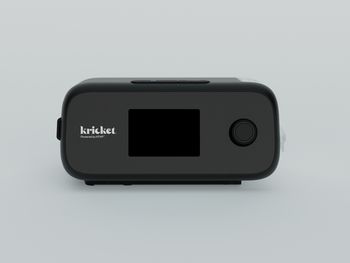
Leveraging AI to minimize clinician burnout
The purpose of any technology is to improve a process or solve a problem. Is AI ready for that role?
The purpose of any technology is to improve a process or solve a problem.
However, with any significant or seemingly fast-paced advancement in technology, there’s a level of cautious skepticism of the unknowns that may result in broad (and misguided) application. We’re experiencing that right now as more
As reported in a recent Medical Economics
In that same article, Califf added, “the potential certainly exists, and we have good reason to hope that we will fulfill the enormous potential of digital health technologies and see more innovative solutions that can result in improved outcomes, but we’d better also preempt the risks.”
Striking the right balance between the clear benefits and concerns of equal weight that come with any new technology is key.
AI technology has the potential to help solve one of the greatest challenges facing clinicians across health care and their patients right now. High rates of burnout is driving an expected shortage of up to
The advancements in AI technology are unfolding on an almost daily basis, leading to some obvious questions and some relevant concerns. Could AI technology be used to streamline burdensome everyday tasks for clinicians and staff, including time consuming work such as medical scribing, discharge summaries, and administrative paperwork? Also, how can this tool be used in health care to address the alarming rate of clinician burnout without jeopardizing patient data privacy and accuracy?Building trust in this technology among users and patients is a priority and can be accomplished – but it’s unlikely to happen overnight.
New technology takes time to mature and instilling trust requires deliberate and thorough, managed rollouts and consistent oversight. We don’t have to look back all that far for a great example of how a new technology can solve a pressing problem but also provide a foundation that would revolutionize an entire industry as it reached maturity.
Two decades ago, the standard process for filling a prescription included a pen, paper and an unreliable fax machine or a good old-fashioned phone call between a physician and pharmacist.
What happened when a physician couldn’t reach the pharmacy during their only break between seeing patients that day? What happened if the patient lost the hand-written paper prescription once they left the prescriber’s office, or when the pharmacist couldn’t read the physician’s handwriting? Time was lost tracking down information. It’s that time that should have been spent with patients.
Electronic prescribing technology was developed to solve these challenges with the added benefit of enhancing patient safety and supporting clinicians with an overall more efficient prescribing process. Now, it takes just a few clicks to send a prescription electronically to a pharmacy, and in 2022, more than
The success of e-prescribing led to even greater advancements in health care. Beyond eliminating the significant room for error that existed in the manual prescribing process, this technology allowed for prescription and patient information to exist digitally paving the way to better-informed patient care that we’ve come to expect today.
With advancements and adoption of technologies with proven benefits, including e-prescribing and more broadly, the exchange of clinical information serving as an example, it's not surprising that doctors, nurses, pharmacists and health care administrators are eager to unleash the potential of emerging generative AI capabilities. Especially if those capabilities can be leveraged to help alleviate clinician burnout. Yet, cautious skepticism is warranted. Significant concerns must be addressed, namely around data security, privacy, and ensuring AI systems are reasoning accurately and pulling proven patient information from reputable sources.
In much the same way nation-wide adoption of electronic prescribing technology was met with some hesitation or concern, these innovators were able to counter this instinctive response by setting high standards around this technology and proving their unwavering commitment to strong data security measures that put patient protection first in every transaction.
Health care technology companies are all carefully analyzing how to harness the momentum behind advancing generative AI capabilities without impacting the quality of the information they produce. Success with any advancement in health technology will be measured by doing no harm to the patients entrusting us with their care. Regardless of where AI goes next, improving healthcare semantic interoperability and developing innovative technology that eliminates burdens on our clinicians and will restore their ability to focus on what matters most: providing quality, meaningful care to patients.
Mark has led information technology efforts for Surescripts since founding RxHub and throughout the consolidation with SureScripts. Mark lends his expertise to a number of healthcare standards organizations, including the National Council for Prescription Drug Programs (NCPDP) Board of Trustees and a member of HL7 Da Vinci Operating Committee and HL7 FHIR at Scale Taskforce (FAST) Steering Committee. He also serves on the Minnesota InspireCIO Advisory Board and the Ōmcare board. Mark has a masters in AI from the University of Pennsylvania, holds a patent and numerous awards for applied AI.
Newsletter
Stay informed and empowered with Medical Economics enewsletter, delivering expert insights, financial strategies, practice management tips and technology trends — tailored for today’s physicians.








